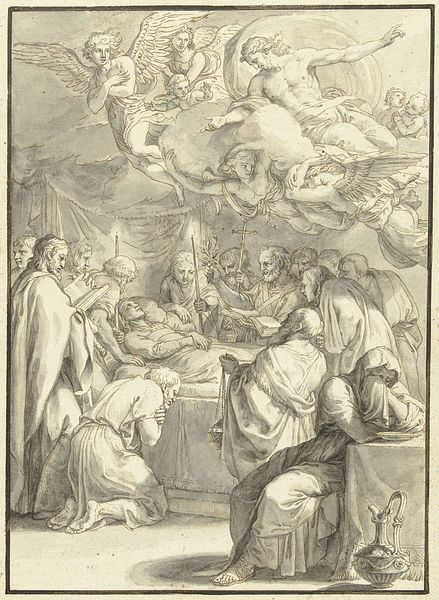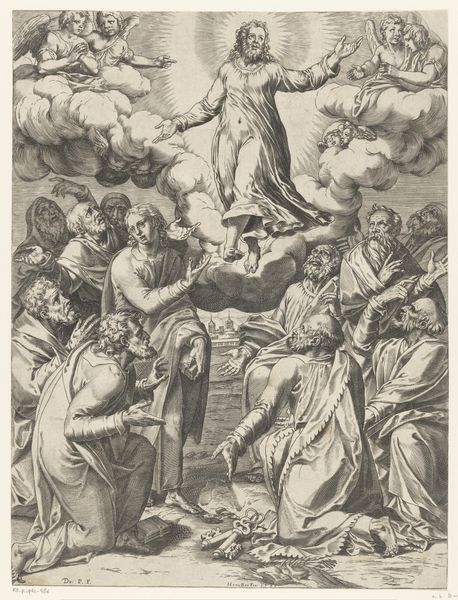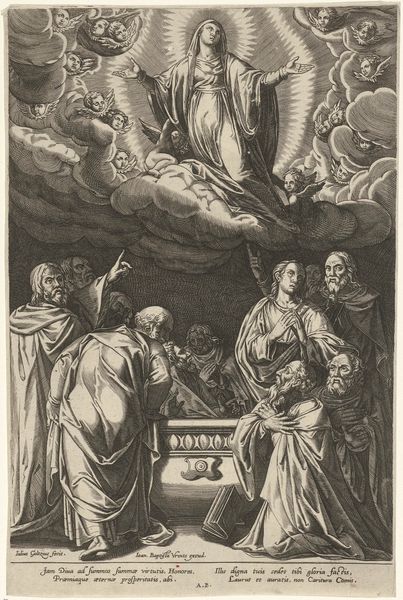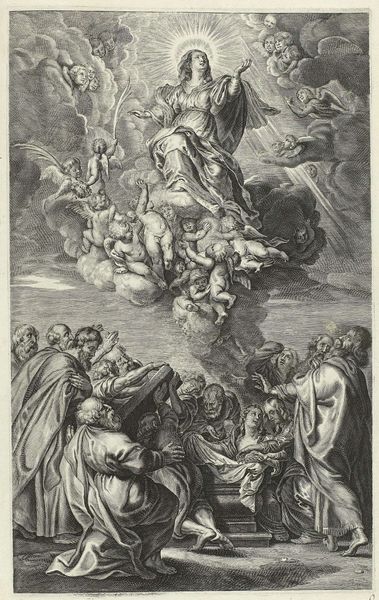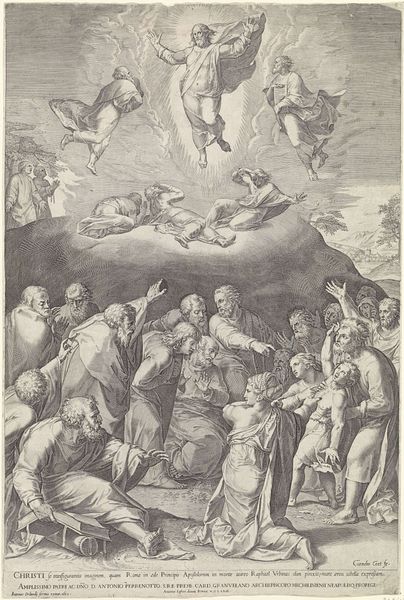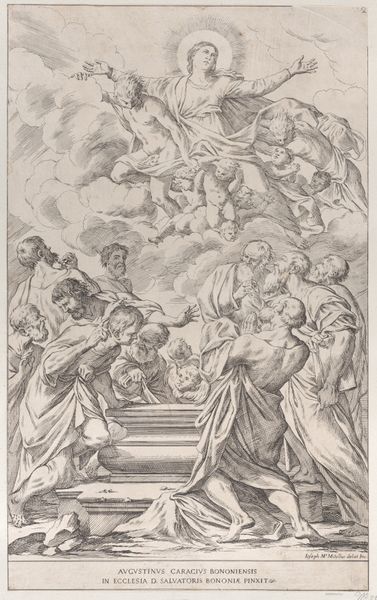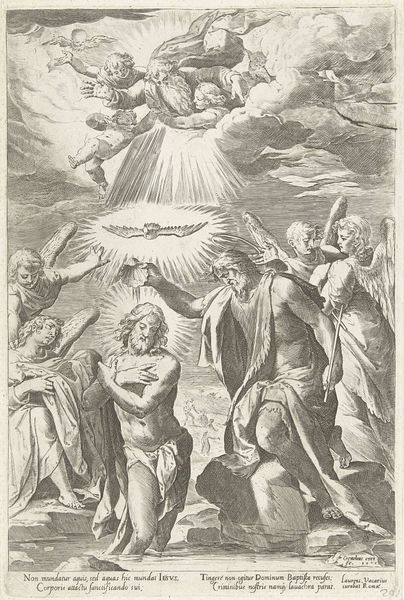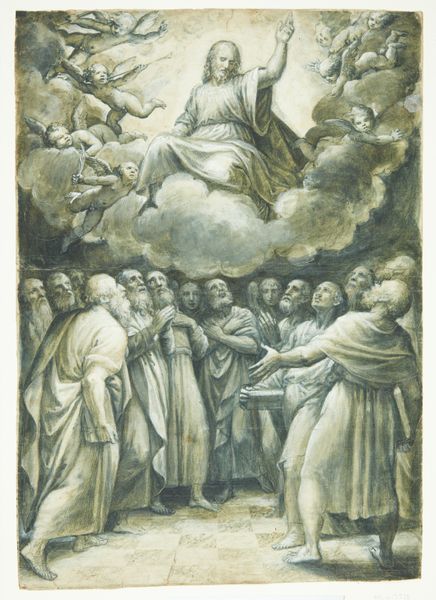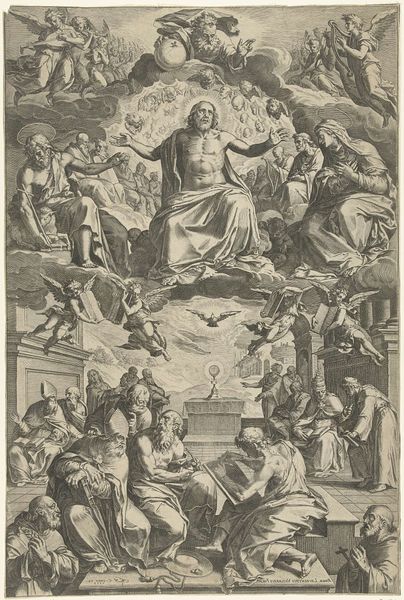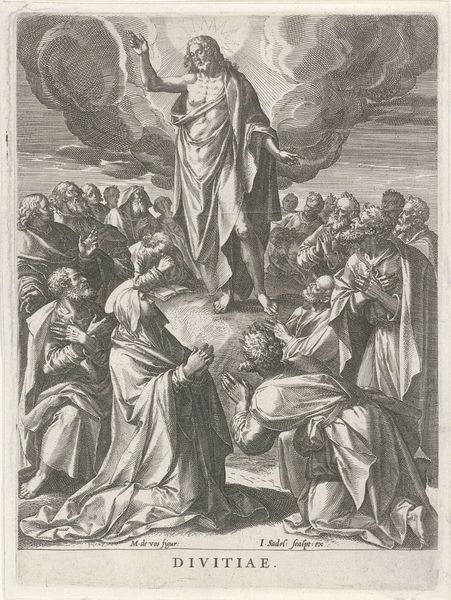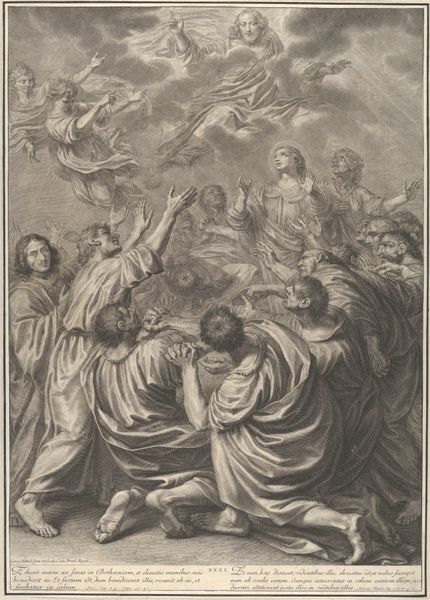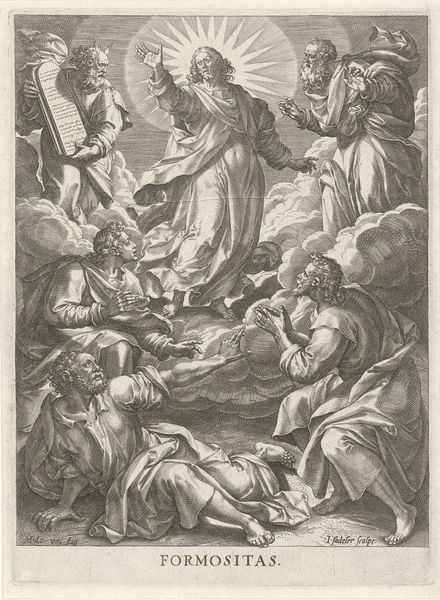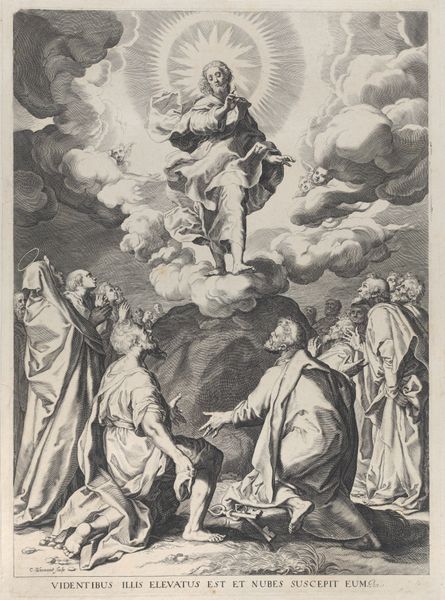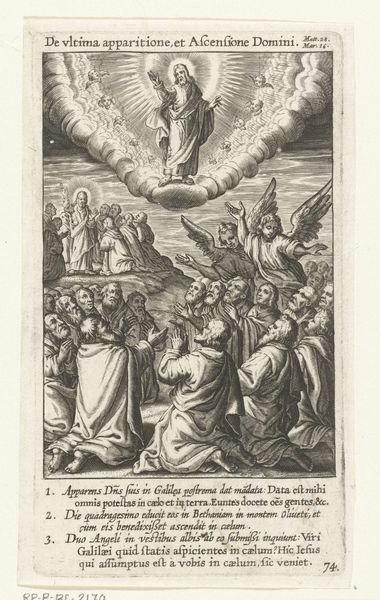
print, engraving
#
baroque
# print
#
figuration
#
history-painting
#
engraving
Dimensions: height 534 mm, width 366 mm
Copyright: Rijks Museum: Open Domain
Editor: Here we have Jacob Matham's "Ascension of Mary," created between 1581 and 1611. It's an engraving, so primarily black and white, and portrays this really dramatic scene. The Virgin Mary floats above the apostles and is surrounded by a crowd of little cherubs. What jumps out to me is the very clear distinction between earthly struggles, depicted by the very crowded scene on Earth, and heavenly peace. How do you interpret this work? Curator: It's fascinating how Matham uses that contrast, isn't it? I think situating this work within its historical and social context helps us understand its deeper meanings. The baroque style often sought to inspire awe and reinforce the power of the church. Do you notice how Mary is positioned, bathed in light and elevated above the apostles? Editor: Yes, she's quite literally raised up above them. Curator: Precisely! And what does that elevation signify within the sociopolitical context of the time? Think about gender, power, and the Church's role in society. By placing her there, the artist visually reinforces a very specific hierarchical structure. Matham’s “Ascension” reinforces dominant power structures of his time. How do you feel that might resonate today? Editor: Well, looking at it through that lens, it feels less like a celebration and more like a statement about the established order, where the Virgin embodies not just faith, but also a specific power dynamic. It’s a great point about questioning the roles and representation of women. Curator: Exactly. It makes you question what message are we implicitly carrying by displaying this, no? This piece then presents a perfect jumping off point to explore these discussions and think about its place within contemporary social discourse. Editor: It is quite intriguing now, thanks for pointing that out! I’ll definitely consider its original social implications more closely from now on.
Comments
No comments
Be the first to comment and join the conversation on the ultimate creative platform.
